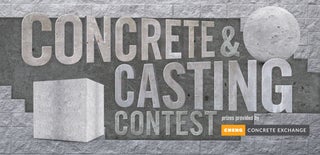Introduction: Make Metal Parts With a 3D Printer (lost Polymer Casting Tutorial)
Are you in love with 3D printing, but tired of flimsy plastic parts? Are you ready to take your work to the next level?! So was I.
While studying Electrical and Explosives Engineering at New Mexico Tech, I learned a technique called lost wax casting, which I used to make a nice bronze necklace pendant for my wife. But carving machinable wax with a CNC milling machine was too much work, so I began experimenting with lost polymer casting. It's basically the same thing as lost wax casting, except that it allows you to make metal parts directly with your 3D printer!
I was absolutely amazed at how easy it was to do, and how well it works. I can't believe that this process isn't common knowledge within the maker community! It opens up all sorts of possibilities for home manufacture of durable, mechanical objects. The weaponeer community will be especially interested in this. Virtually everyone agrees that plastic guns were a horrible idea. With lost polymer casting, they don't have to be plastic anymore.
This 12-step process I've developed is by no means an exhaustive treatise on the subject, but it should provide a great jumping off point for your own experimentation. In my assessment, lost polymer casting is literally the greatest thing since 3D printing itself. I can't wait to see what you do with it!
Step 1: Design Object
This isn't a CAD tutorial (there are plenty of those), but I recommend Trimble SketchUp for its price tag (free) and ease of use. OpenSCAD is also free, but is perhaps a bit harder to use (unless you're a programmer like me, in which case, you'll love it!)
Step 2: Add Sprue
This is basically just a conical piece that attaches to your part somewhere. Length, width, and flare dimensions don't have to be precise, but it should be large enough in diameter to accommodate pouring liquid metal through.
Sometimes, with larger objects, it can be beneficial to add more than one sprue, or air vents through which air can escape from the mold as the metal is poured. If a pocket of air is allowed to form during the casting process, the result will be a hole in your part!
Step 3: Enlarge by 2%
Scaling the part by 2% along all axes will create a volume increase of about 6% (1.02 ^3 = ~1.06). This compensates for the shrinkage the metal part will undergo as the metal cools from ~230C to room temperature.
Step 4: Print Object W/ Sprue
If you're experienced with 3D printing, this step should be fairly straightforward. In most cases, your sprue will probably be facing upward, but I've had success in the past with laying it horizontally atop the build platform. If you need to print your sprue horizontally, you may want to design it as a rectangular prismatic frustum rather than a cone.
Step 5: Embed in Plaster With Sprue Sticking Out
Make sure the object is fully submerged, but not touching the bottom or sides of the vessel. Also make sure that at least a small piece of the sprue is sticking out of the plaster. You may want to rig something to hold it in place while it dries.
Step 6: Let Plaster Harden and Dry
Ideally, you would wait at least 24 hours prior to doing the burn out. This can be sped up somewhat by using techniques such as the above: sun drying (Fig. 1), and accelerated heat drying (Fig. 2). If you decide to accelerate the drying process by applying heat, take care not to apply too much heat. Doing so can flash trapped moisture to steam, causing the plaster to swell and crack.
Only proceed to the next step once the plaster has fully dried!
Step 7: Burn Out Polymer
While wearing flame-resistant gloves (oven gloves are great), carefully place the mold upside-down in a fire. I usually cook it for an hour or more to get all the polymer out.
If your part was printed in PLA, the resulting fumes shouldn't be too toxic.
If your part was printed in ABS, it will smell horrible, and if you breathe in too much of the smoke, you will die.
Step 8: Pour Metal Into Sprue Hole
Experience has taught me that you only get one shot at this. Do not attempt to pour the metal back out of the mold! Once the metal is poured, you're done.
For this example, I used pewter (an alloy of tin), heated with a Hot Pot 2 electric melting pot. I would recommend them. Last I checked, they were something like $40 on Amazon.
Safety goggles, long pants, closed-toe shoes, and thermal gloves (e.g. oven gloves) are strongly recommended for this step.
Any metal that spills will harden into a coin-like object, and can be easily recycled.
Step 9: Wait for Metal to Cool
I recommend waiting 2 or 3 hours, or until the metal is cold to the touch. Remember that plaster is an excellent thermal insulator, so it will keep the metal hot for much longer than you might expect. Smash it out too early, and your part will look like somebody stomped on a gummy bear.
Step 10: Smash Plaster; Remove Metal Part
This is the fun part. It shouldn't require much explanation. If your part is fragile, you might consider whacking it many times softly (from different angles), as opposed to one big smash.
Step 11: Cut Off Sprue With Hacksaw
Saw the sprue off as close to the model as you can without accidentally cutting into the model itself. Soft metals like pewter shouldn't take more than a couple minutes with a sharp hacksaw blade.
Step 12: File Sprue Attachment Point
Optionally, you can also file off all the ugly gold oxidation, revealing the smooth, shiny metal beneath. Just don't get carried away, or you'll find there's nothing left of the part you just made!
Use your newfound metal manufacturing skills only for good. If you manufacture weapons, use them only to defend the innocent from harm. Also, stay on the right side of the law. The ability to manufacture metal parts at home puts you on the same playing field as companies like Glock, Smith & Wesson, and Ruger. But remember that these companies have entire armies of lawyers to keep them out of trouble. It is much easier for an individual hobbyist to trip up and do something verboten without even knowing it, so be careful.
If you enjoy my work, please subscribe to my YouTube channel, and I promise to keep it coming!
Cheers,
~ Peter

Participated in the
Epilog Contest VII

Participated in the
Concrete and Casting Contest













